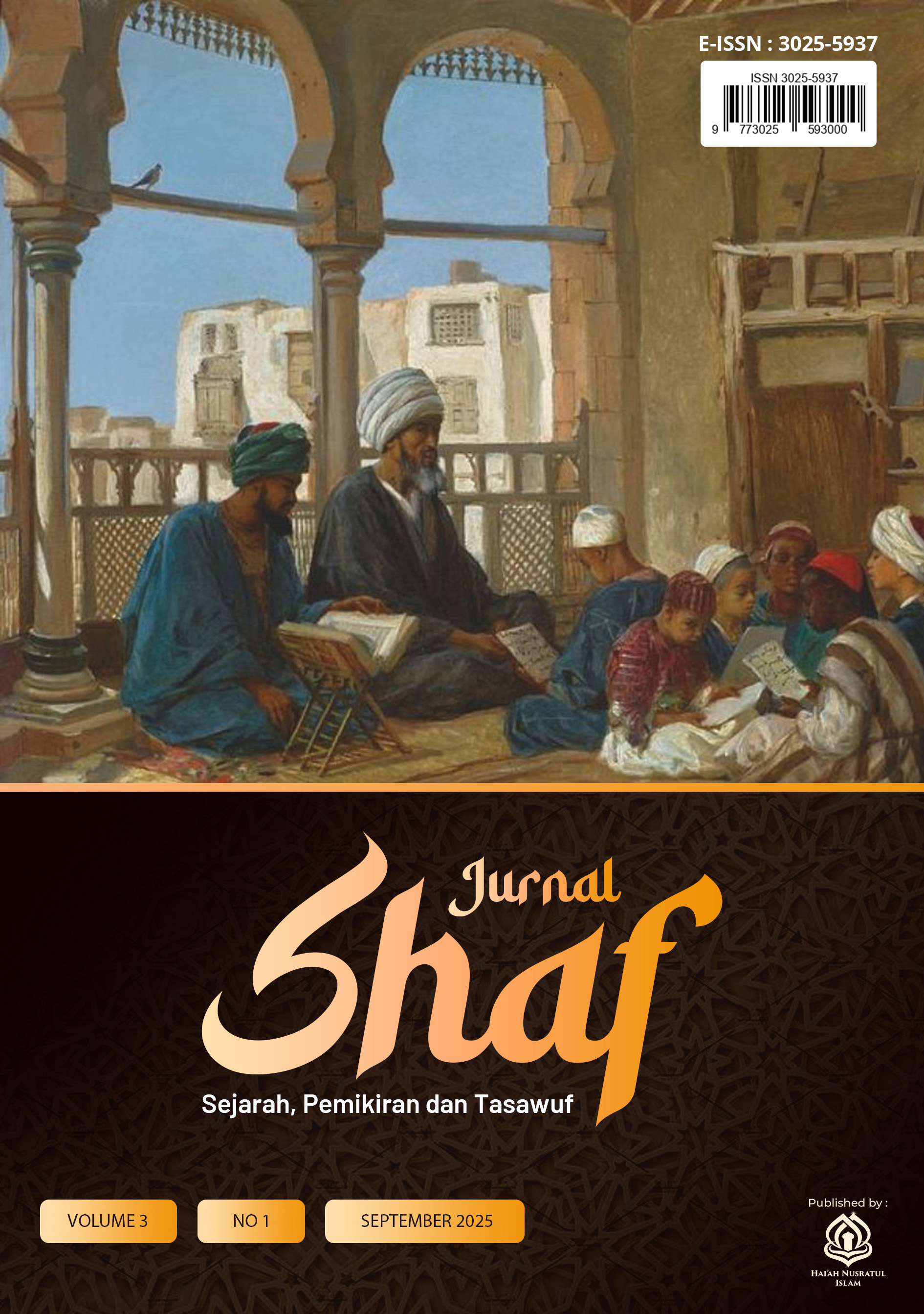KORELASI DHOMMAH SEBAGAI TANDA ROFA’; Studi Sikap Kepemimpinan Ideal Dalam Perspektif Islam
DOI:
https://doi.org/10.59548/js.v3i1.426Keywords:
Dhammah, Rofa’, Islamic LeadershipAbstract
This article aims to explores the symbolic meaning of dhammah as a grammatical marker of rafa’ in Arabic and its relevance to ideal leadership in Islam. Using a qualitative library research method, the study draws on nahwu texts, academic articles, and Islamic sources such as the Qur’an and Hadiths. The analysis highlights how dhammah, which elevates a word’s position in a sentence, represents that leadership should be granted based on merit and noble character, not force. Like dhammah maintains grammatical balance, a leader is expected to uphold social harmony through justice and responsibility. Misplacing dhammah can drastically change a sentence’s meaning, just as leadership mistakes can deeply impact society. Thus, dhammah is not only a grammatical tool but also a metaphor for ethical leadership—emphasizing worthiness, moral integrity, and balanced governance. This study reveals the philosophical depth of Arabic grammar in illustrating Islamic leadership principles through linguistic symbolism.
References
Abid, M. N. (2016). Tanda-tanda I’rab Rafa’. Dosenmuslim.Com. https://dosenmuslim.com/bahasa-arab/tanda-tanda-irab-rafa/
Anwar, M. (2009). Ilmu Nahwu Terjemahan Matan Al- Jurumiyah dan ’Imrithy (18th ed.). Sinar Baru Algensindo.
Arifin, M. (2023). Konsep Kepemimpinan Dalam Islam : Karakteristik Pemimpin Ideal Menurut Al-Quran. 3(3), 151–160.
Holimi, M. (2020). MUDAH BELAJAR NAHWU. Institut Agama Islam Sunan Kalijogo Malang.
Masbuk, G. A., Nashihati, F. I. I., Yunita, E., Falah, S., Latifah, M., Ummul, I., & Bogor, Q. A. (2023). Analisis Konsep Pemimpin Ideal Dalam Perspektif Imam Al- Ghazali . 2(2), 74–88.
Muhsin, K. Al. (2022). Makna Filosofis dari Tanda-Tanda I’rob Rofa’ bagi Kehidupan Santri. Al Muhsin.Id. https://almuhsin.id/makna-filosofis-dari-tanda-tanda-irob-rofa-bagi-kehidupan-santri/
Mukhlasin, A., & Halim, A. A. Al. (2021). Kepemimpinan Islam (Perspektif Al-Qur’an Dan Hadits). Jurnal Kajian Keislaman, 9(2).
Nur’ain, M., Rapinah, N., Syifa, N., & Anisa, R. N. (2023). Kepemimpinan Rasulullah SAW. Edu-Leadership, 3(1), 1–8.
Solikhah, N. I., Rahmawati, A., Putri, D., Sari, I., Fernando, L. N., & Malang, U. M. (2020). Konsep Kepemimpinan Dalam Prespektif Islam. 5(36), 154–167.
Wally, M. (2014). MEMBANGUN KARAKTER PEMIMPIN DALAM PERSPEKTIF AL-QUR’AN. Jurnaal Tahkim, 10(1).
Wati, S., Filzah, C. B., & Angga, T. A. (2025). Pemimpin Ideal dalam Cahaya Al Qur ’ an. 2.
Zubaidillah, M. H. (2020). Pengantar Ilmu Nahwu Belajar Bahasa Arab Sampai Bisa. Amuntai.
Downloads
Published
How to Cite
Issue
Section
Categories
License
Copyright (c) 2025 Nabila Arrahma, Nissa Zahra Silmy Damanik

This work is licensed under a Creative Commons Attribution 4.0 International License.
- Share — copy and redistribute the material in any medium or format for any purpose, even commercially.
- Adapt — remix, transform, and build upon the material for any purpose, even commercially.
- The licensor cannot revoke these freedoms as long as you follow the license terms.
Under the following terms:
- Attribution — You must give appropriate credit , provide a link to the license, and indicate if changes were made . You may do so in any reasonable manner, but not in any way that suggests the licensor endorses you or your use.
- No additional restrictions — You may not apply legal terms or technological measures that legally restrict others from doing anything the license permits.
Notices:
You do not have to comply with the license for elements of the material in the public domain or where your use is permitted by an applicable exception or limitation .
No warranties are given. The license may not give you all of the permissions necessary for your intended use. For example, other rights such as publicity, privacy, or moral rights may limit how you use the material.













